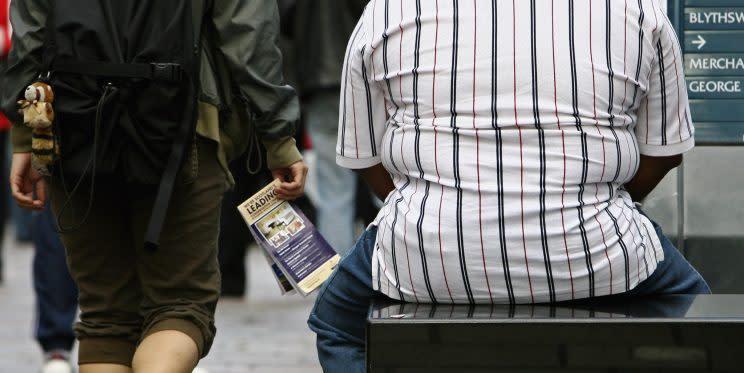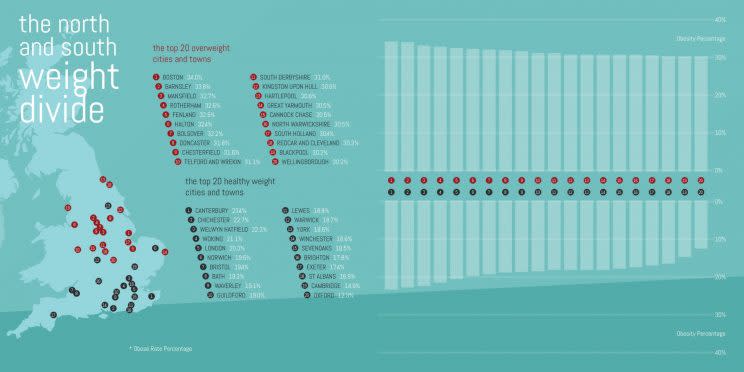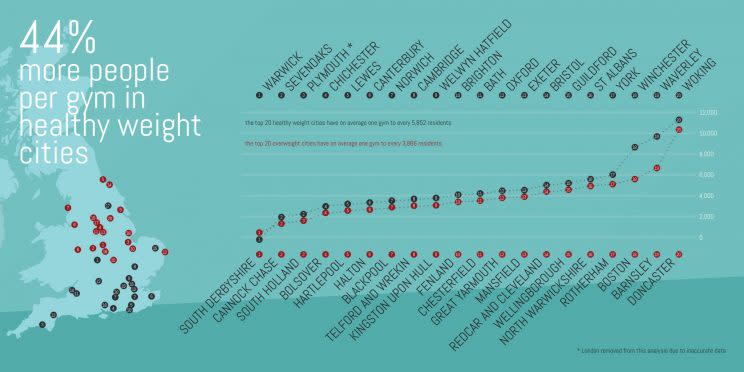The price of obesity: people in UK's most overweight cities earn £5,000 a year less than healthier regions

People living in the UK’s most overweight cities are more than £5,000 a year poorer than those in the country’s healthiest places.
New research shows those in the top 20 healthiest weight cities earn a median salary of £24,024 a year.
That compares to those in the least healthiest weight cities, who bring home a median wage of £19,021 a year, according to we:bo, a one-to-one training app.
MORE: Brexit means pricier breakfast: Hard leave could see cost of fry-up soar
The 20 most overweight cities have 22% more takeaways per 100,000 people than their healthier counterparts and also have 44% less people per gym than the slimmer cities.

Almost two-thirds of British adults are classed as overweight or obese and the oft-quoted ‘obesity crisis’ is said to be costing the UK economy at least £27 billion a year.
That figure includes the cost of treating those with the condition and the associated diseases, such as diabetes, as well as the impact on the ability to work and its knock-on effect on the tax take and benefits.

The research analysed a variety of factors that may be contributing to obesity in our towns and cities.
Using data from the Office for National Statistics, it identified Boston, Barnsley, Mansfield, Rotherham and Fenland as the most overweight cities in the UK.
Oxford, Cambridge, St Albans, Exeter and Brighton are the “fittest” cities, according to the ONS data.
MORE: Workers in Britain are being underpaid by £2.7 billion each year — but most don’t know it
“Obesity has risen sharply in the last 10 years,” said Sanjeev Virdi, co-founder of we:bo.
“As personal fitness trainers, we were intrigued to see if there was a correlation between average wages, the number of fast food outlets, the number of available gyms and the overall obesity rate in a range of towns and cities.”
Researchers also ascertained the median average wage (yearly), the number of takeaways per 100,000 people and gyms by the number of residents.

“As you can see, the data clearly shows a pattern that towns with a lower average wage suffer from higher obesity rates,” added Virdi.
“You can also see the same correlation with takeaways. The more takeaways in a town or city, the more likely it is that the population of that town or city will be obese.”
MORE: ‘Cash-in-hand’ window cleaners and gardeners told to pay ‘appropriate tax’
By crunching the numbers, we:bo showed that on average, one in three people in the bottom 20 towns were classified as obese.

Meanwhile, two in five people in the top 20 cities were considered to have a healthy weight – with the likes of St Albans and London seeing median salaries in excess of £30,000 a year, some £11,000 more than the median for the obese cities.
A Swedish study in 2014 showed a correlation between obesity and lower earning power. It revealed men who are obese aged 18 grow up to earn 16% less than their peers of a normal weight.

 Yahoo Finance
Yahoo Finance 
